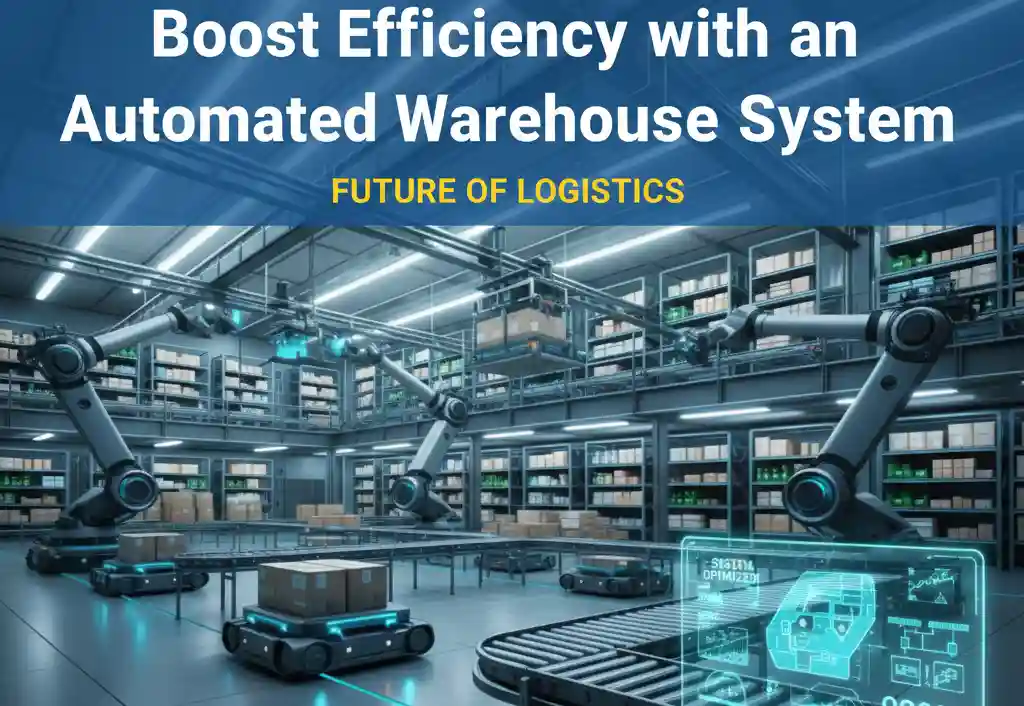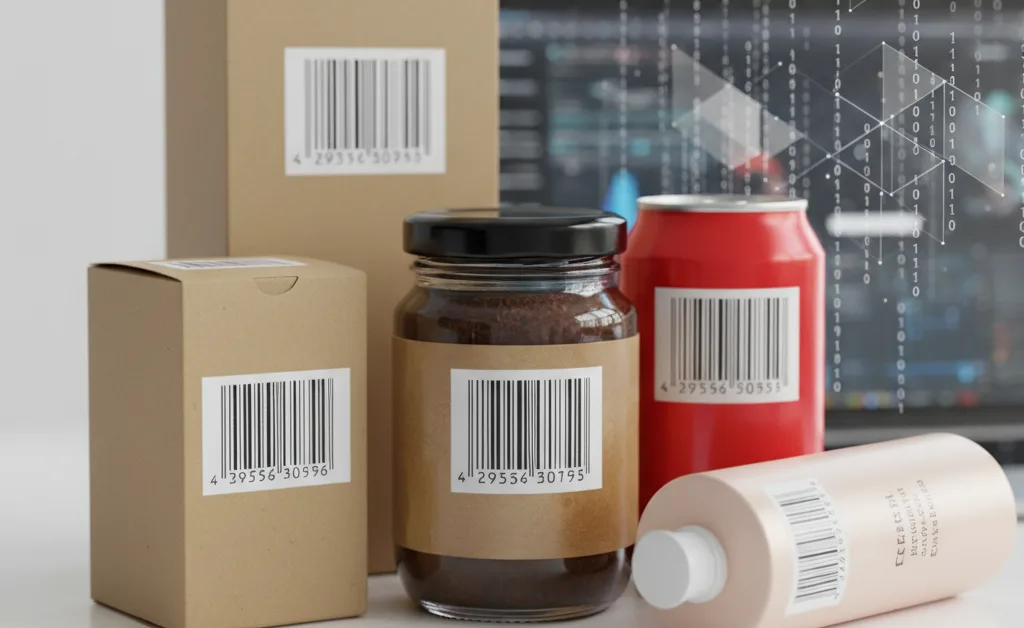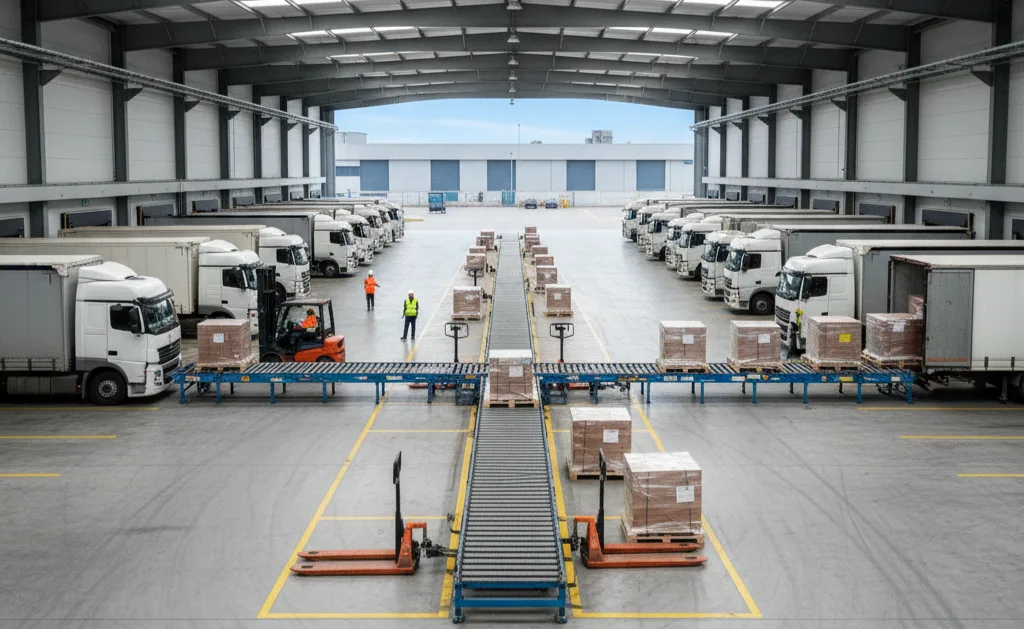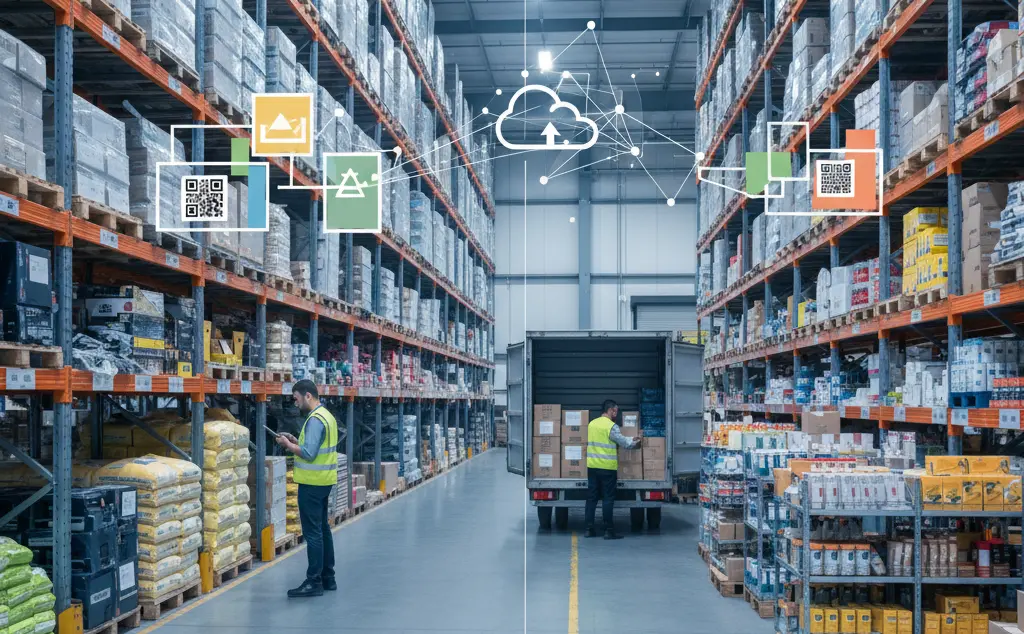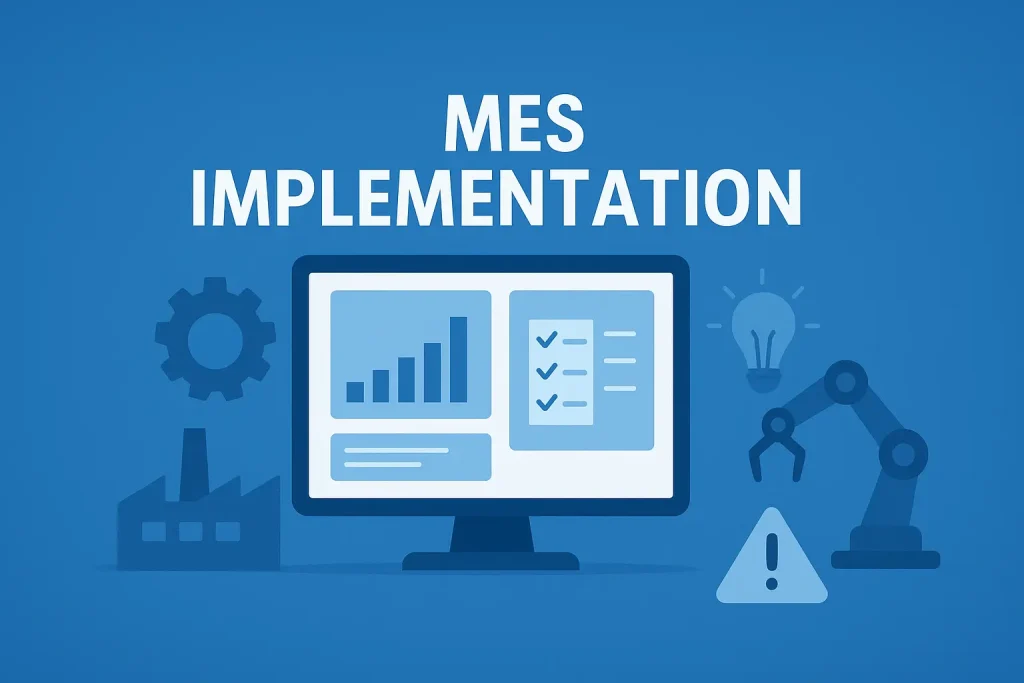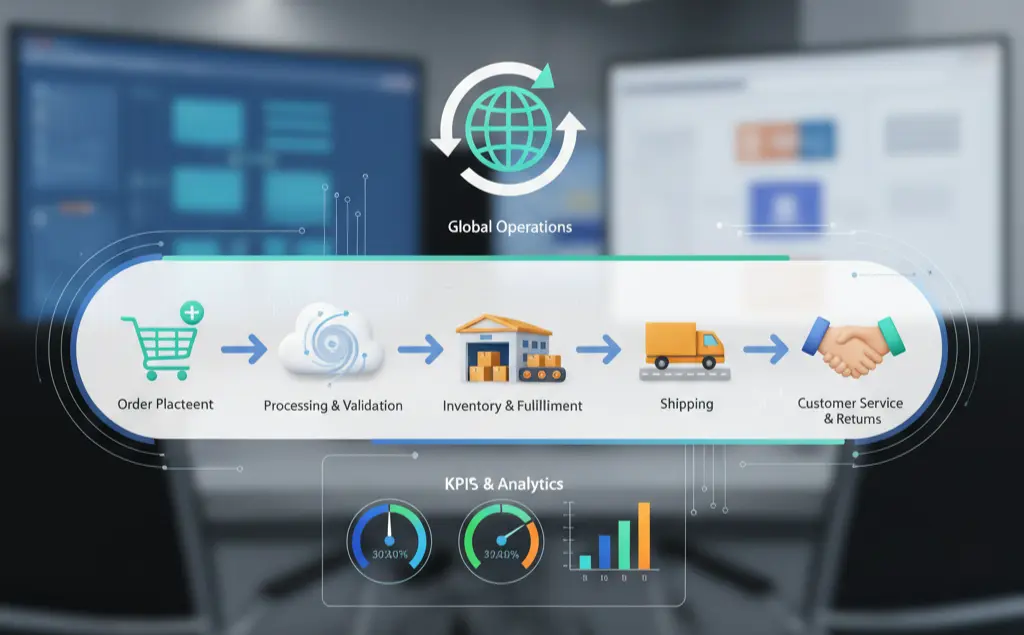Introduction
In an era where customers demand faster deliveries with almost perfect accuracy, warehouses can no longer depend on human labour and paper processes alone. An automated warehouse system integrates robotics, software, and warehouse best practices to streamline storing, picking, packing, and shipping so these processes are faster, less expensive, and more accurate. For businesses that want to grow, that need to automate through peaks in demand, or that want to cut down on mistakes, automation is really the most significant factor they can employ to increase throughput and customer happiness.
This guide will lead you through what an automated warehouse system is, the warehouse models it supports, the automation solutions you can implement, as well as how warehouse automation redefines the supply chain. From Types of Automation (e.g., PLC or SCADA) onward, the section elaborates each topic in sufficient depth to help you feel confident in your choice. It also includes a clear conclusion and an expanded FAQ section.
1. What is an Automated Warehouse System?
An AS/RS is a combination of hardware (robots, conveyors, shuttles), software (WMS, WCS/WES robotics controllers) and processes that perform warehouse functions with minimal human interaction. Rather than operators walking aisles to pick items, they manage the flow from a control dashboard as robots deliver the goods to them. The system eliminates the need for manual touchpoints, increases accuracy, and enables real-time inventory visibility. Integration with an organisation’s systems (ERP, order management, TMS) is critical for the automated warehouse to function as part of the full supply chain and not as a stand-alone silo.
2. Types of Warehouse (and how automation fits)
Types of warehouses Warehouse types The types of warehouses you operate (or plan to operate) can make a big difference in the most appropriate automation solution. Overview: the most common types how automation are typically applied to the most common types of warehouses.
Distribution Centers & Fulfillment Hubs
These high-capacity facilities handle extensive fascias of SKUs (Sales Keep Units) and Out-bond shipments straight into its export channel. Automation in these centres is all about speed—sortation systems, high-speed conveyors, automated sorters, and robotic picking are used to speed up fulfilment and reduce manual errors.
Cold Storage / Temperature-Controlled Warehouses
Perishables require a controlled atmosphere. Here, the automation needs to be resistant to cold: insulated AS/RS systems, cold-rated AGVs/AMRs and temperature monitoring sensors. Automation limits the extent to which humans are exposed to harsh conditions and enhances the pace of processing, all while ensuring the integrity of the product.
Bonded & Customs Warehouses
Bonded warehouses are subject to inventory control and records of which supplies are received and shipped out. In terms of automation, these areas are concentrated on providing secure access control, accurate inventory recording, as well as integration with customs and regulatory systems for quick clearance.
High-Density / Vertical Storage Facilities
When land is scarce, vertical stacking and high compact AS/RS systems are applied. Through automation, maximum use of the cubic space can be realised by cranes or shuttle mechanisms that can pick up pallets or totes that are brought down from the high-density racks in two blocks, which this system reduces aisle space and increases storage efficiencies. Multi-purpose / Hybrid Warehouses
Some warehouses have manufacturing staging, returns processing in the same building as distribution. Flexible automation (mobile robots, modular conveyors and flexible storage) can handle several workflows without facility reengineering to perform each workflow.
Knowing the right type of warehouse to have makes deciding on what types of automated systems will provide the best value much easier.
3. Types of Automation Systems in Warehousing
This is a more detailed explanation of the kinds of automation systems used in contemporary warehouses, including how they function, common use cases, advantages and disadvantages, and issues to consider when integrating them.
3.1 Automated Storage & Retrieval Systems (AS/RS)
How it works: AS/RS Stacker cranes, shuttles, and gantry robots are used to store and retrieve goods in the racks. Application: High-density storage of pallets, raw material stores, and order buffering for a high number of SKUs. Benefits: Maximises vertical space, increases picking speed for pallet loads, reduces human travel time, and improves accuracy. Considerations: More expenditure and time to plan; most efficient for stable SKUs and high-density operations. Works with WMS/WES in real-time to reserve storage locations, command crane equipment and update inventory.
3.2 Conveyor & Sortation Systems
How it works:
Static conveyors and sorters carry and direct products from the receiving, picking, packing, and shipping areas.
Use Cases:
High-volume e-fulfilment, parcel sorting, wave picking.
Benefits:
Steady throughput, steady material flow, easy to sequence for packing and shipping.
Trade-offs
: Not as flexible as mobile systems; layout changes are costly. Best for when the facility layout is stable and the throughput is well understood.
3.3 Automated Guided Vehicles (AGVs) & Autonomous Mobile Robots (AMRs)
What it is:
Mobile robots that transport goods within a facility. AGVs have predefined routes; on the other hand, AMRs rely on sensors and mapping to autonomously move.
Use cases:
Transporting pallets, carts or racks; replenishing; point-to-point material movement.
Benefits:
AMRs provide a flexible, scalable form of automation with little to no facility modifications; AGVs are best suited for consistent, nascent routes.
Considerations:
Fixed infrastructure or floor markers are needed for AGVs. AMRs need to be properly mapped and similarly skimmed. Both systems need to be integrated with a WMS for assigning tasks and managing the flow of traffic.”
3.4 Goods-to-Person (G2P) SystemsÂ. What it is: Mechanisms (shuttles, vertical lifts, carousels) bring inventory to stationary workers.
Use cases:
High-value, small-item picking where accuracy and ergonomics matter (pharmaceuticals, electronics).
Advantages
: Reduces worker travel time dramatically and increases picks per hour. Improves ergonomics and reduces fatigue.
Considerations:
Requires upfront investment in picking stations and shuttles. Best combined with pick-to-light or voice systems for highest efficiency.
3.5 Pick-to-Light, Put-to-Light & Voice Picking
What it is:
Light indicators and voice commands guide human pickers to exact pick locations and quantities.
Use cases:
Fast-moving SKUs, piece picking for cartons, returns processing.
Advantages:
Low error rates, quick onboarding for temporary staff, and relatively low cost vs full robotics.
Considerations:
Requires wiring or wireless signage and periodic maintenance. Useful as a hybrid approach where full automation is not yet warranted.
3.6 Warehouse Execution & Control Systems (WES / WCS)
What it is:
Software that orchestrates automated equipment in real time—bridging between WMS and physical automation.
Use cases:
Any facility combining multiple automation devices—conveyors, sorters, robots.
Advantages:
Enables optimal sequencing, load balancing, and dynamic re-routing. Keeps equipment operating efficiently and reduces bottlenecks. Considerations: Expect customisation, and ensure vendor expertise to map process logic. A WES reduces the risk of automated systems ‘fighting’ each other.
3.7 Collaborative Robots (Cobots) & Vision Systems
What it is:
Cobots can safely work side-by-side with human operators to perform tasks such as lifting, scanning, while vision systems enhance the pick accuracy and quality control.
Applications:
Order consolidation, quality inspection, mixed SKU picking.
Benefits:
Cobots enhance human productivity and alleviate physical fatigue; vision contributes to hands-free verification and automated quality control.
Notes:
Cobots have payload limits; vision systems require lighting and camera setup, and may have difficulties with reflective or clear packaging.
3.8 Drones & Aerial Inventory What it is: Drones are flying up and down warehouse aisles, conducting cycle counts and inventory audits.
Use cases:
High-bay or very large warehouses where manual counting is a bottleneck.
Pros:
Quick scans, less labour for doing an inventory, and more frequent reconciliations.
Concerns:
Regulatory/safety protocols, battery life, and complex mapping.
Integration note: Most modern sites use a blend of automation types. Integration of WMS, WES, ERP and Robotics controller with a well-defined data model is the vital success factor. Always consider orchestration and data flow from the beginning.
4. Benefits of an Automated Warehouse System
Automation’s ROI is often observed across a number of dimensions – speed, cost, accuracy, and flexibility. Here’s how they work in practice.
Efficiency & Throughput Gains
Automated equipment operates continuously at a constant speed. When properly tuned, throughput increases dramatically, meaning more orders shipped per hour and shorter order cycle times.
Lower Labour Costs & Lower Error Rates
Automation reduces labour-intensive manual processes, reducing headcount requirements and allowing redeployment of personnel to value-added functions. Error rates are reduced as mechanical picking and verification systems eliminate the “human error” component of these repetitive tasks.
Inventory Accuracy & Visibility
Accurate stock records are maintained as a result of real-time information feeds from scanners, sensors, and the WMS. Fewer miscounts lead to fewer back-orders, fewer emergency reorders and better financial reporting.
Scalability & Peak Handling
Automated processes scale the capacity without the need to hire a large seasonal workforce. During high periods of activity, you can keep bottlenecks running stronger, or even increase capacity by adding modular AMRs and temporary shifts.
Space Optimisation & Cost Savings
Vertical racking, AS/RS, and mini-load shuttles help to store the same volume of inventory that can be used in fewer square feet to store more. This could result in substantial savings in real estate cost per SKU.
Customer Experience Improvements
Deliveries that are quicker and more accurate reduce returns and complaints. Increased customer satisfaction, more positive reviews, as well as a higher likelihood of making repeat purchases—return investment drivers, quite indirect but very potent.
5. How Logistics Automation Transforms Supply Chains
Warehouse automation is just one node in the larger chain. When coupled with logistics automation, the effect multiplies on inbound, warehousing, outbound and last-mile operations.
End-to-End Visibility
IoT and telematics provide real-time location and condition information for goods in transit. This visibility allows for proactive decision-making—rerouting shipments, rescheduling production to prevent stockouts.
Dynamic Routing and Last-Mile Optimisation
Logistics automation is based on real-time information that can find the best routes, combine shipments and narrow delivery windows. Transportation and warehouse systems begin to talk to one another, trucks are dispatched with more informed carriers, and delivery times and costs go down.
Improved Demand Forecasting & Inventory Placement
Predictive analytics help align inventory positioning to demand profiles by location – nearer to customer clusters or regional hubs. This reduces lead-time and transportation cost.
Trouble Reverse Logistics
Returns processing is automated to ensure returned products are inspected, restocked, or directed for refurbishment promptly. Automation reduces the delay and cost of returns, increasing recovery rates.
Automated warehouse system seamlessly integrates with ERP and TMS to provide orders, production schedule and shipping plan without any manual reconciliation. Automation is not a standalone optimisation but can be truly linked to the manufacturing-customer pipeline.
6. Case Studies & Real-World Examples
Here are some concrete examples of ways you can automate.
Amazon Robotics (Fulfilment Centres)
Amazon debuted mobile robots that transport shelves to stationary pickers. By reducing picker travel time and increasing travel time, this goods-to-person system model slashed goods-to-person travel time and dramatically increased picks per hour, making it possible for Amazon to provide same-day or next-day delivery on a scale.
DHL (Smart Warehousing & Automation Services)
DHL combines automation with sophisticated WMS and robotics to cater for e-commerce surges. Their distributed fulfilment system strategically inventories to minimise transit time, and processes returns in a financially straightforward manner with automated sorting.
Qodenext & Industry-Specific Integration
Industry-specific ERP solutions such as Qodenext offer ERP integration with warehousing and compliance modules—crucial for industries such as construction or heavy industry, where logistics must be integrated with site schedules and regulatory requirements.
Different automation mixes — robots, conveyors, software coordination, and strategic inventory staging — are illustrated in each example, demonstrating solutions tailored to meet business-specific needs.
7. How to Choose the Right Automated Warehouse System
Automation decisions should be made strategically and in stages. Here’s a practical roadmap.
Step 1 — Define Your Objectives
Specify KPIs: reduce pick time by X%, labour cost by Y%, or on-time delivery to Z%. Making your goals quantifiable means you can calculate ROI.
Step 2 — Document workflows
Record current flows: receiving, putaway, picking, packing, and dispatch. Locate bottlenecks and error hotspots. This baseline helps prioritise areas for automation.
Step 3 — Rank Use Cases
Start where automation offers the fastest wins — repetitive pick routes, high-travel zones, or inventory buffering. Goods-to-person systems can also show a quick ROI in piece-pick operations.
Step 4 — Vendor Evaluation
Find vendors with successful experience in your industry . Request references, video walkthroughs, and a pilot proposal. Make sure they play well with your WMS/ERP.
Step 5 — Pilot and Gradual Rollout
Conduct pilots within a single zone before full rollout. Pilot,s check your assumptions about throughput, the safety of your protocols and how well integrated everything is before you can integrate the whole operation.
Step 6 — Plan for Animal Control
Train your team early and even begin to shift roles. Automation results in more work (exception handling, monitoring and process improvement).
Step 7 — Measure, Optimise, Expand Then
Utilise the KPIs that WMS/WES captures to identify additional improvement areas. Many companies later extend automation to other zones after reaping the benefits.
Cost and ROI considerations: Estimate the TCO inclusive of hardware and software licenses, integration, change management, and maintenance. Compare the anticipated labour savings, accuracy improvements, and higher throughput to estimate the payback period.
Conclusion
An automated warehouse solution is a great tool for modern businesses: it increases throughput, accuracy, diminishes long-term expenses and enhances the customer experience. However, automation is not a silver bullet – the best outcomes are achieved when different forms of automation (AS/RS, AGVs/AMRs, conveyors, G2P) are tailored to your type of warehouse and business objectives, integrated with your WMS/WES and ERP system, and implemented in well-thought-out stages.
If you’re assessing automation, have KPIs that are well defined from the beginning, conduct pilots, and pick partners who know your industry. When executed properly, automation turns warehouses from cost centres to competitive differentiators – enabling you to get product out the door faster, more reliably, and at a reduced cost.
Thinking about adopting an automated warehouse system in your warehouse? Should you ask for vendor demonstrations, visit a live implementation, or commission a feasibility study to develop a pilot program that proves ROI?
FAQs —
Q1. Why are there different types of warehouses? What purpose do they serve?
Answer:
People ask about the different types of warehouses as they have a specific use.. Examples are distribution centres, designed for quick throughput, fast-moving warehouses, cold storage for temperature control, bonded and customs warehouses for duty deferred handling, high-density vertical warehouse, and pause manufacturing staging plus e-commerce fulfilment. Basically, these differences (storage vs fulfilment) include function, infrastructure (temperature control, security), and location strategy (near ports, in urban centres). The type: cold storage requires cold-rated robotics; distribution hubs require high-speed sortation.
Q2. What exactly is ‘Logistics Automation’ and how does it interact with Warehouse Automation?
Answer:
Logistics automation involves the entire goods flow at the supply chain level - including transportation planning, carrier selection and route optimisation, dock scheduling, and inventory in transit. It is the more focused subset of warehouse automation, the operations within the picking, putaway, and dispatch. When warehouse automation and logistics automation converge, the whole chain is reactive: a TMS can advise a WMS of inbound shipments and pre-stage goods in automated zones, engaging AGVs to replenish. This integrated automation reduces bottlenecks, leads to better inventory placement, and shorter lead time.
Q3. What are the types of warehouse automation systems, and how do I know which one is right for me?
Answer:
The most common types of automation systems are AS/RS, conveyors and sortation, AGVs/AMRs, G2P solutions, pick-to-light/voice solutions, WES/WCS, and cobots. Your choice depends on your SKU profile, your throughput and your space: AS/RS for high-density pallet storage; conveyors + sorters for continuous high throughput; AMRs for adaptive layouts or staged automation; G2P for piece-pick accuracy. For SMEs, beginning with pick-to-light or a small AMR fleet typically delivers solid ROI before investing in heavier capital outlays such as AS/RS.
Q4. Will an automated warehousing system be worth it for small and medium businesses?
Answer:
Yes — but it depends on how far you scale. Small companies can get started with low-capex options: software optimisation (WMS upgrades), pick-to-light stations, or a small fleet of AMRs that require minimal infrastructure modifications. The key is to experiment, to measure, to measure. If your number of orders is high or errors are costly, even minimal automation can reduce labour costs and improve accuracy, leading to a return on investment in 1 to 3 years.
Q5. How long does it take to set up an automated warehouse system?
Response: Implementation time varies widely. You can be up and running with a small pick-to-light or AMR pilot in weeks to months. Large projects such as AS/RS conveyor and WES integration, for example, generally run 6 – 18 months from design stage to full operation, and this time can be influenced by facility modifications, rack installations, complexity of integration and staff training. Risk is minimised with phased rollouts: one zone is piloted, refined and then expanded.
Q6. How much does warehouse automation cost, and how can I calculate the ROI?
Answer: Costs can be anywhere from low (tens of thousands for pick-to-light or a handful of AMRs) to multi-million for AS/RS and integrated robot fleets. Estimate Return on Investment: Labour savings – the ROI calculation is based on the value of the labour being automated. Error affinity Space savings Increased throughput Reduced returns Calculate TCO – Include cost of the hardware, the software, integration, training, and maintenance over time. Many businesses attain paybacks within 1–4 years, depending on scale and product-mix.
Q7. How will an automated warehouse system work with my ERP and WMS?
Answer:
Integration is key Integration is key. The WMS is the operational brain for inventory and tasking, letting you tell the system what you want before you pick it.. WES/WCS is a layer between WMS and automation machinery that issues real wheeled commands. ERP for higher-level financials and demand planning. A good integration plan will leverage the use of APIs or middleware that allows exchanging orders, inventory and status information among systems and maintains the data in sync in real time, which allows end-to-end automation.
Q8. Are automated warehouses capable of managing cold chain products and other special needs?
Answer:
Yes. Cold storage-specific automation solutions are available — cold-rated conveyors, insulated AS/RS, Robotics for cold storage, and more. Meanwhile, separate solutions monitor environmental parameters, sending alerts if limits are exceeded. For hazardous materials or pharmaceuticals, automation is required to meet stringent life safety, regulatory and product-specific requirements, and a vendor with relevant certifications is a must.
Q9. What are the safety and labour considerations in warehouse automation?
Answer:
Repetitive and dangerous work is part of safety when automated, but so are new risks (robot/human interface, electrical). Establish solid safety zones, sensors and training. The role of the human workforce will evolve from that of physical picker to supervisor, exception manager, and system manager—so reskill, communicate benefits well, and engage your people early to minimise resistance to change.
Q10. How to choose between AGVs and AMRs in my plant?
Answer:
AGVs are best for stable facilities with fixed routes and frequent repetitive transport functions. They boast lower per-unit cost in some applications, yet demanding floor planning. AMRs offer greater flexibility and dynamic routing compared to AGVs and are easier to redeploy – perfect for staged automation or plants with fluctuating floor plans. Consider the stability of your layout, the magnitude of your total travel, and your willingness to alter your infrastructure.
Q11. What are the strongest candidates for wireless WMS in the warehouse?
Answer:
E-commerce/retail (batches of orders), automotive/manufacturing (pallet-intensive and JIT.), pharmaceuticals (traceability and cold chain), and consumer electronics (high SKU variety) have high impact potential. Yet, in principle, just about any organisation with sufficient scale, repeatability, or need for high accuracy can derive benefit from automation if it is sized properly.
